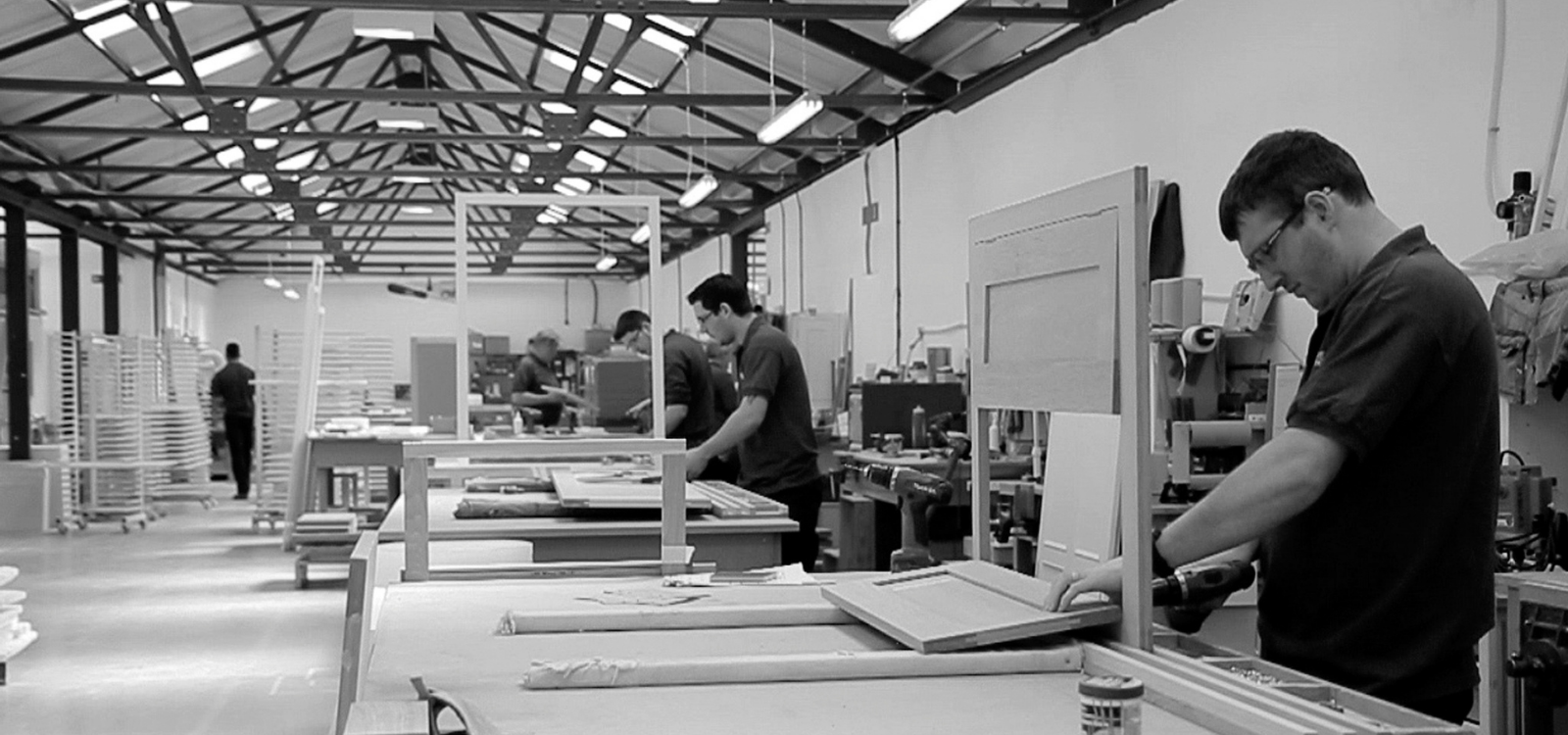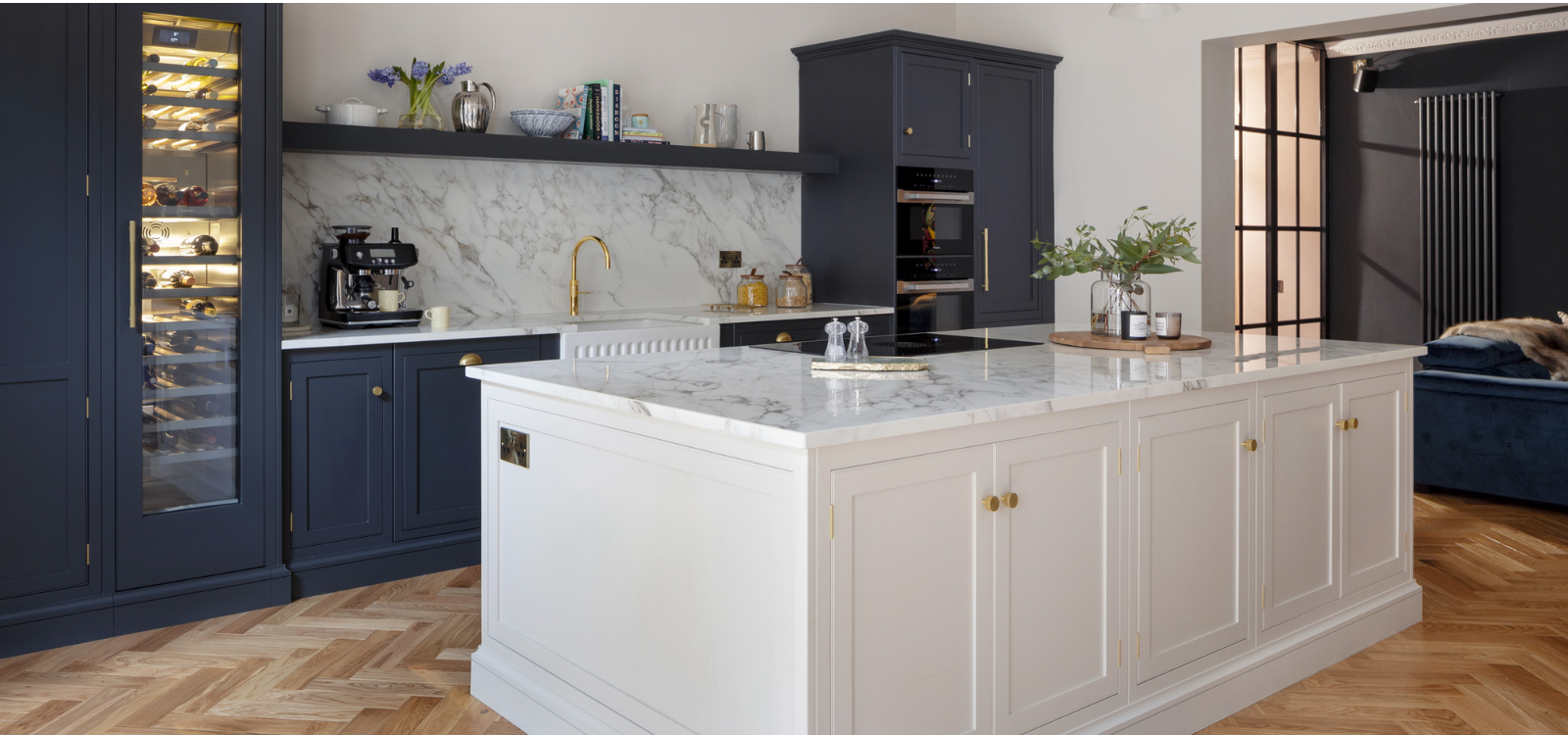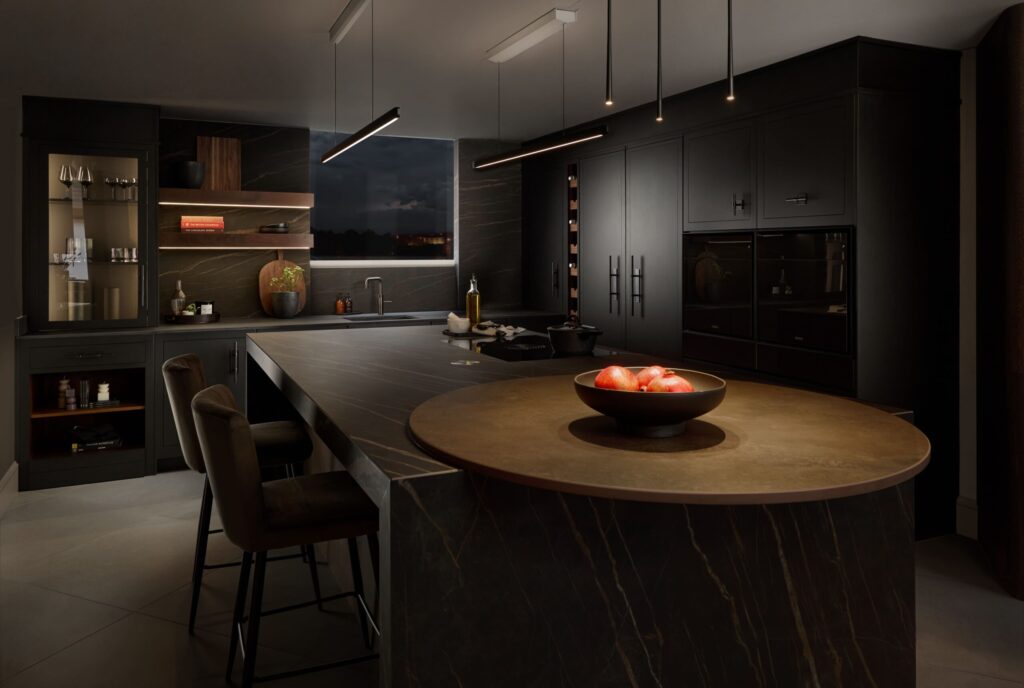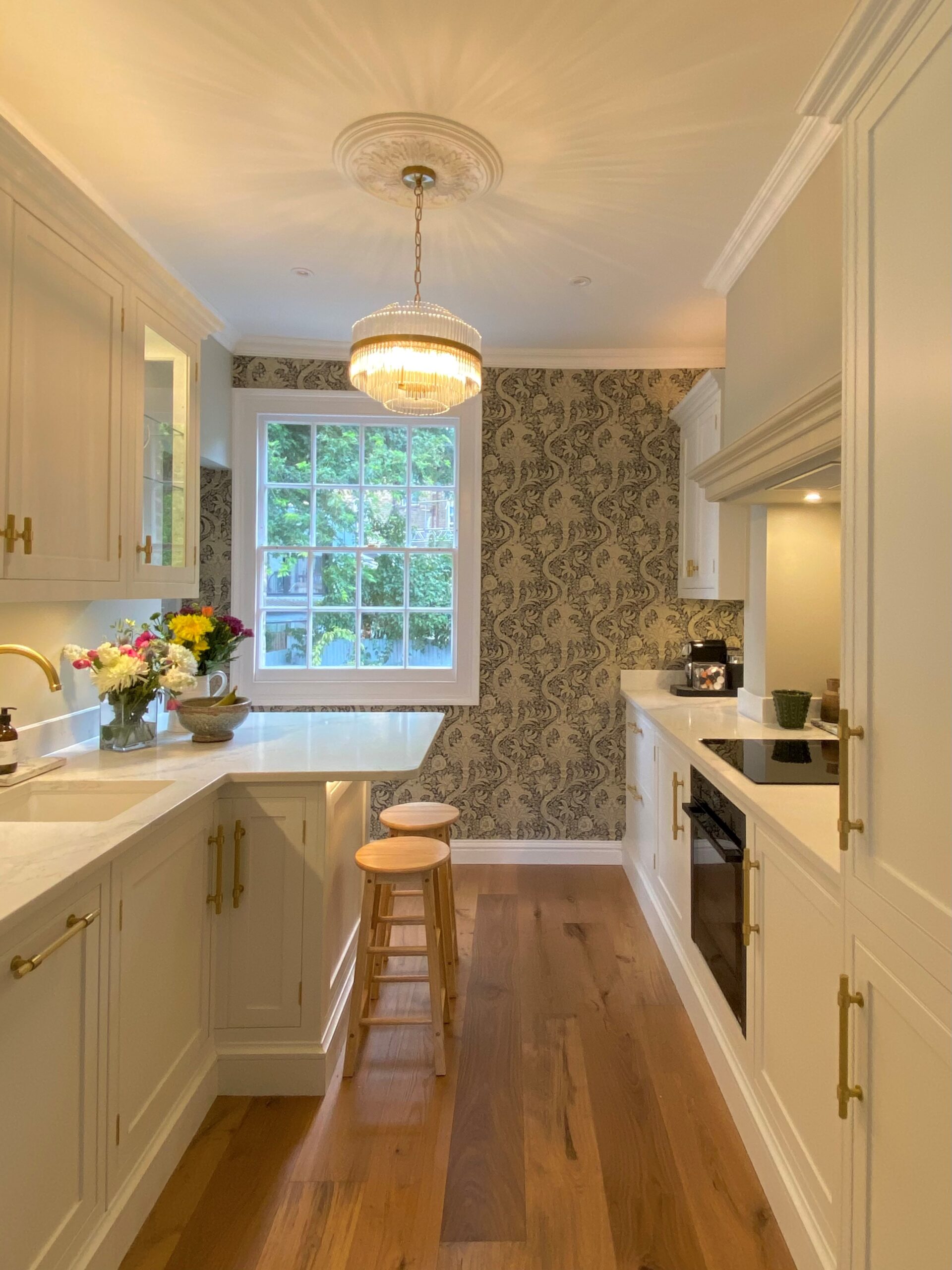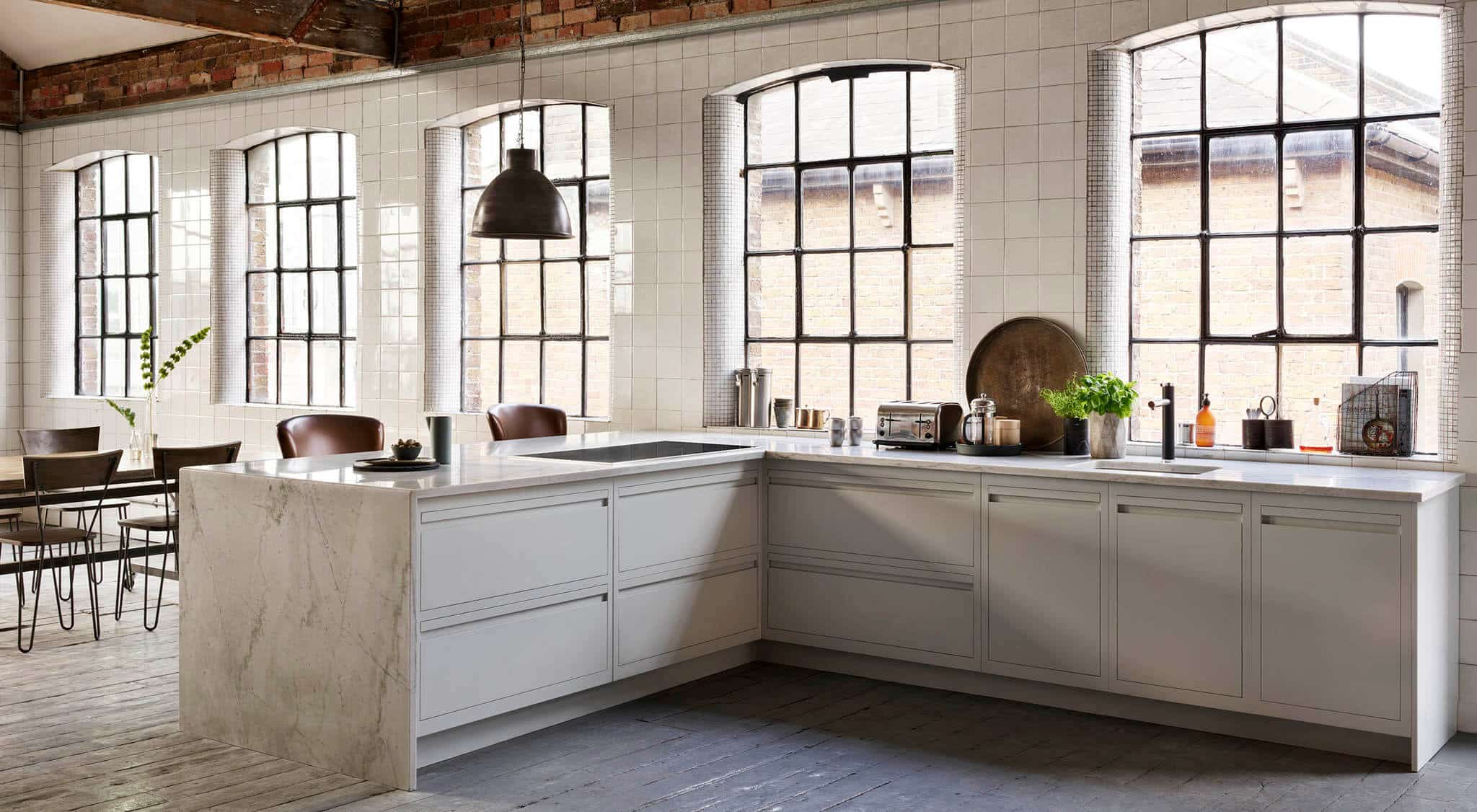
We are always excited by current kitchen interior trends, and thankfully, in the last couple of decades, we’ve seen the emergence of some incredibly chic ones. The 20s are all about finding a balance between modern minimalism and a cool edge, and there’s no design that fits that blurb more than the industrial style. Think exposed brick, slick steel, and a pared down colour scheme. But how can you design your kitchen to suit this aesthetic?
Here at Harvey Jones, we create beautiful bespoke kitchens in any style you wish, and we have lots of experience with industrial renovations — so let us help you make your space into the industrial style kitchen of your dreams.
Combine different materials
The industrial spirit is all about giving raw materials their place to shine, so it makes sense to start with these. You want to keep the industrial elements visible, and not cover them. Remember how we mentioned exposed brick? That’s the kind of character we’re looking for. Slightly run down natural wood, unpainted stone and concrete, and glossy metals like chrome or copper. Combining these different elements creates the elegant yet rough feeling that an industrial kitchen evokes.
Take this beautiful industrial family space, for example. It features copper hardware, a textured brown-tile backsplash reminiscent of bricks, and natural wood bar stools with dark metal legs that complement the framing of the vast windows and the appliances. The wooden herringbone floor adds to the overall feel, too, devising an inviting, well-lit but crisp space that is just as functional as it is gorgeous to look at.
Pay attention to detail
At its core, industrial design is still minimalist and practical. That means that you don’t have to go all out if you don’t want to — adding a few industrial details to an otherwise standard decor can immediately give the space the dramatic look you’re seeking. Change your bog-standard hardware to bronze or black. Expose your pipework (or opt for fake decorative ones). Add pendant lighting, or install a robust extractor fan. These are all great examples of how small things can enhance your kitchen while still keeping it relatively low-key.
If you’re finding it hard to visualise, this modern white Shaker kitchen can help you see what a few tiny design elements can do. The space is friendly and inviting, with plain white cabinets and brightly coloured stools. However, we have included some industrial flair that instantly adorns the kitchen with a chic, contemporary aesthetic. The black brick tiles, golden lights and navy floating shelf give the room a little more edge, while even the smallest of touches — such as replacing your normal sockets with gilded ones — render the room vastly more impactful by not leaving any detail out.

Think about the layout
Layout is crucial when designing an industrial kitchen. The style calls for expansive, warehouse-like territory, with large open spaces without much interruption. Avoid any walls or separators and embrace the wide and boundless feeling. However, your kitchen is still a practical place, so you’ll want to carve out certain areas in your room for different purposes. It’s possible to do this without impacting the open layout — if anything, you can utilise these features to create the illusion of space. The easiest way to make this happen is by adding a breakfast bar or an island, like this stunning Shaker kitchen with exposed bricks. The room feels broad and capacious, but is sectioned for comfort without any idle spots. The exposed pipe also helps create a cosy feeling without taking away from this.
That being said, an industrial style can work very well even if you don’t have much space to work with. If your kitchen is tiny, you can incorporate foldable vintage bar stools, driftwood breakfast counters, and pipe pan racks to enhance the industrial sense, using them in a practical way to elicit that semblance of vastness. These will save you space while being functional and breaking up the layout of the room but not monopolising it.
Choose the right colour palette
The traditional industrial kitchen calls for deep and dark hues — charcoal, black, navy and emerald immediately pop to mind — married with soft neutrals like mushroom and silver. The name of the game is the juxtaposition between hard and soft materials, for example you could pair raw concrete with polished chrome. This sensational houseboat kitchen is the perfect example of a bold colour palette that still maintains its tenderness. The dark green cabinetry flows seamlessly into the light grey countertops, while the golden hardware contrasts with the black appliances and monochrome marble backsplash. Wooden shelves and drawers tie this all together, and the vintage run-down sign intensifies the industrial feel.
However, an industrial kitchen doesn’t have to steer clear of bright shades. Our bold green Shaker kitchen weds the gorgeous Dulux Highland Green toned cabinets with light marble and antique brass accents in the hardware and mirrors. The deep-toned oak and walnut breakfast bar and flooring add some warmth, and the mirrored backsplash makes the kitchen feel more spacious in line with the traditional industrial style. This type of design is all about experimenting with a multitude of materials, so thinking outside of the box and experimenting with different elements is never a bad idea, colour palette included. However, if you’re picking something bolder, make sure to tone it down in other areas.
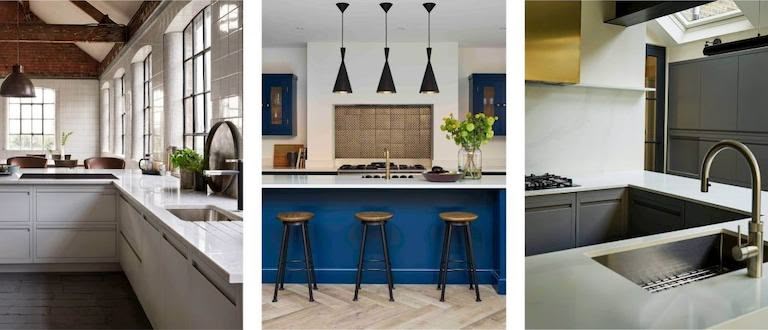
If you’re ready for a more complete overhaul of your kitchen to make it professionally industrial, our team will be happy to help. Get in touch with us or visit a showroom today.

